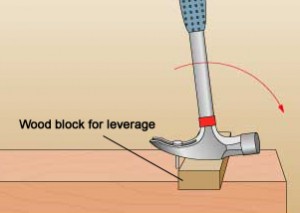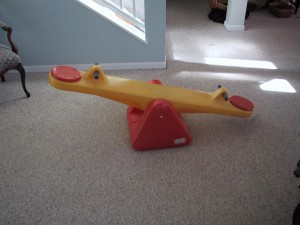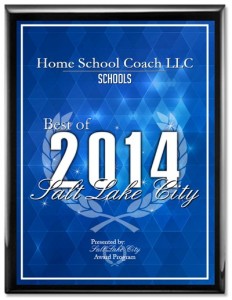Levers for The Spark Station part 2
Yesterday I explained a game that I saw on a television program for kids using the principle of levers. Today I would like to help you see what else you can use to teach the principle.In physics, a lever is a ridged object that is used with an appropriate fulcrum or pivot point to multiply the mechanical force (effort) that can be applied to another object (load). This leverage is also termed mechanical advantage. A lever is one of the six simple machines. http://en.wikipedia.org (I will talk about simple machines in my next blog)
Did you know that many common tools are based upon the lever? Crowbars, pliers, scissors and row boat oars are all based upon levers and fulcrums.
http://www.cool-science-projects.com is a site where you can see a very simple illustration of how a lever works.
 Because it is theorized that levers were used to build the ancient pyramids in Egypt you could add things to your Spark Station about Egypt. You could add an interesting book about how the pyramids were built. That could extend into a general learning about the country itself during the age of the Pharaohs. What did the people eat? Do we eat those foods today? How did they dress? What was their art like? Can we recreate some of their art? You can find some information here http://www.historyforkids.org/learn/egypt/ and I am sure there is much more. It really doesn’t take a lot of time to get ideas and information on line. This is a help for busy moms.
Because it is theorized that levers were used to build the ancient pyramids in Egypt you could add things to your Spark Station about Egypt. You could add an interesting book about how the pyramids were built. That could extend into a general learning about the country itself during the age of the Pharaohs. What did the people eat? Do we eat those foods today? How did they dress? What was their art like? Can we recreate some of their art? You can find some information here http://www.historyforkids.org/learn/egypt/ and I am sure there is much more. It really doesn’t take a lot of time to get ideas and information on line. This is a help for busy moms.
For kids as young as 3-4 or even older look for books that show how heavy machinery such as cranes use length and leverage to move heavy objects into place. Buy a toy crane for your child and talk about how it works. This is an example of a familiar conversation that can occur naturally as a child plays. It is always amazing to me what they take in when you think they are just playing. Play is the great learning tool for core and love of learning children.
Remember that basic tools use the concept of leverage (Crowbars, pliers, scissors). Put these tools in a box or tub in The Spark Station (although it’s not a lever add a screw driver or two). Have some items like clocks, radios and toasters from a thrift shop that can be taken apart with the tools. Talk about how the tools work and how they make it easier to do a job.
(although it’s not a lever add a screw driver or two). Have some items like clocks, radios and toasters from a thrift shop that can be taken apart with the tools. Talk about how the tools work and how they make it easier to do a job.
Some modern examples of levers are using a hammer to pull out a nail, using a bottle-opener to open a pop bottle, using a screwdriver to pry the lid off a can of paint, a pair of scissors, using a balance scale to weigh things, and playing on a see-saw (teeter-totter). Can you identify the fulcrum in each of these examples? (Hint: it varies, because there are three different kinds of levers. You can find the answer to the fulcrum question here http://www.historyforkids.org/scienceforkids/physics/machines/lever.htm
Get an old tree stump, a box of nails and a hammer. Put the stump in the back yard and just let them hammer in and remove nails. This is another opportunity to have a familiar conversation about this wonderful science concept. I can tell you that it is a super fun activity!
The earliest remaining writings regarding levers date from the 3rd century BC and were provided by Archimedes. “Give me a place to stand, and I shall move the earth.” is a remark he made. (Quoted by Pappus of Alexandria). He also formally stated the correct mathematical principle of levers. Put some information on this scientist in your Spark Station. Read to your children during your reading time about what he thought, did and discovered. Pappus was a Greek Mathematician of Alexandria. Add some information about him and introduce your children to some math concepts. Your job is to inspire, to plant seeds. The child’s job is to learn and grow and he/she will, when inspired by great ideas and great people.
Now I understand that this all may seem a bit overwhelming. Let me remind you that I took very little science and math in school, only what was absolutely required. I was afraid of both subjects. What I did take I didn’t do outstandingly well at. However, I can look things up. I can think about them and how they relate to what I do every day. I am learning myself every day. I certainly know more than any 4 year old and most 12 year olds. All a mentor is, is someone who is a step ahead of you and moving in the direction you want to go. You are that for your children. You are the expert in your home. You can sow seeds, build enthusiasm and inspire. I know you can!
Possibly Related Posts:
- Inspiring Learning
- Family Philanthropy Project – How to Grow Your Family’s Heart by Jodie Palmer
- Science of making Ice cream with liquid nitrogen
- Fun activities for afterschooing and for homeschoolers
- HELP! Activities and games for small children




{ 0 comments… add one now }